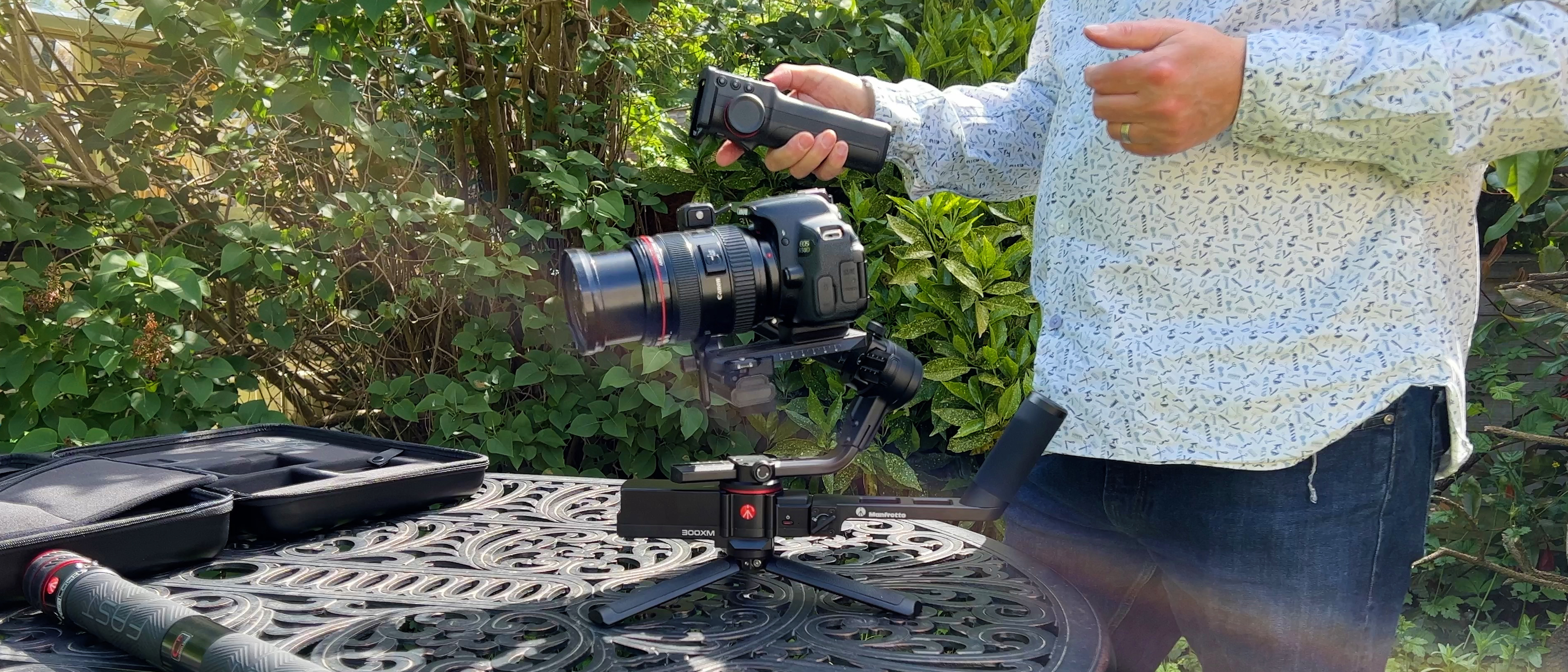Digital Camera World Verdict
If you’ve been struggling to find a gimbal that will effortlessly carry a DSLR (or mirrorless camera) and large lens then the 300XM could be the answer. It enables you to perform smooth pans, tilts and tracking moves with your usual DSLR kit but you could find that your arm begins to ache quite quickly. The ability to control the gimbal remotely via Gyro mode could be useful for certain scenarios (and it’s very cool to demonstrate!). A powerful heavy lifter!
Pros
- +
Supports up to 3.4kg
- +
Touch screen changes modes
- +
Comes with Gimbal 300XM app
- +
Remote control via detachable handle
- +
Carry case
Cons
- -
Slow to charge (2.6hrs)
- -
Rebalancing with some zooms
Why you can trust Digital Camera World
It's heavy! This will be your first impression of the Manfrotto Modular 300XM Gimbal before you even open the box that it ships in. This is the largest, heaviest and most expensive gimbal I’ve reviewed for DCW. Previous test subjects such as the Crane M2S and the Vimble 3, look and feel like toys compared to this heavy lifter!
Till now, none of the gimbals I’ve tested could cope with the combination of my Canon EOS 650D sporting a hefty Canon Zoom EF 24-70 lens. Fortunately, the 300XM took my kit’s 1.484 Kg weight in its stride, enabling me to pan, tilt and roll and track my DSLR with professional steadicam style smoothness. There are some issues to take note of when balancing the gimbal with a zoom lens which I’ll cover in the build and handling section.
If you want to get a quick idea of what this gimbal is like to set up and use, have a look at this video:
Specifications
Weight: 2kg
Dimensions: 19.6 x 29 x 46cm
Payload: 3.4kg
Tilt Angle: 340 °
Roll Angle: 340 °
Panning Angle: 360 °
Battery Life: 10 hours
Key features
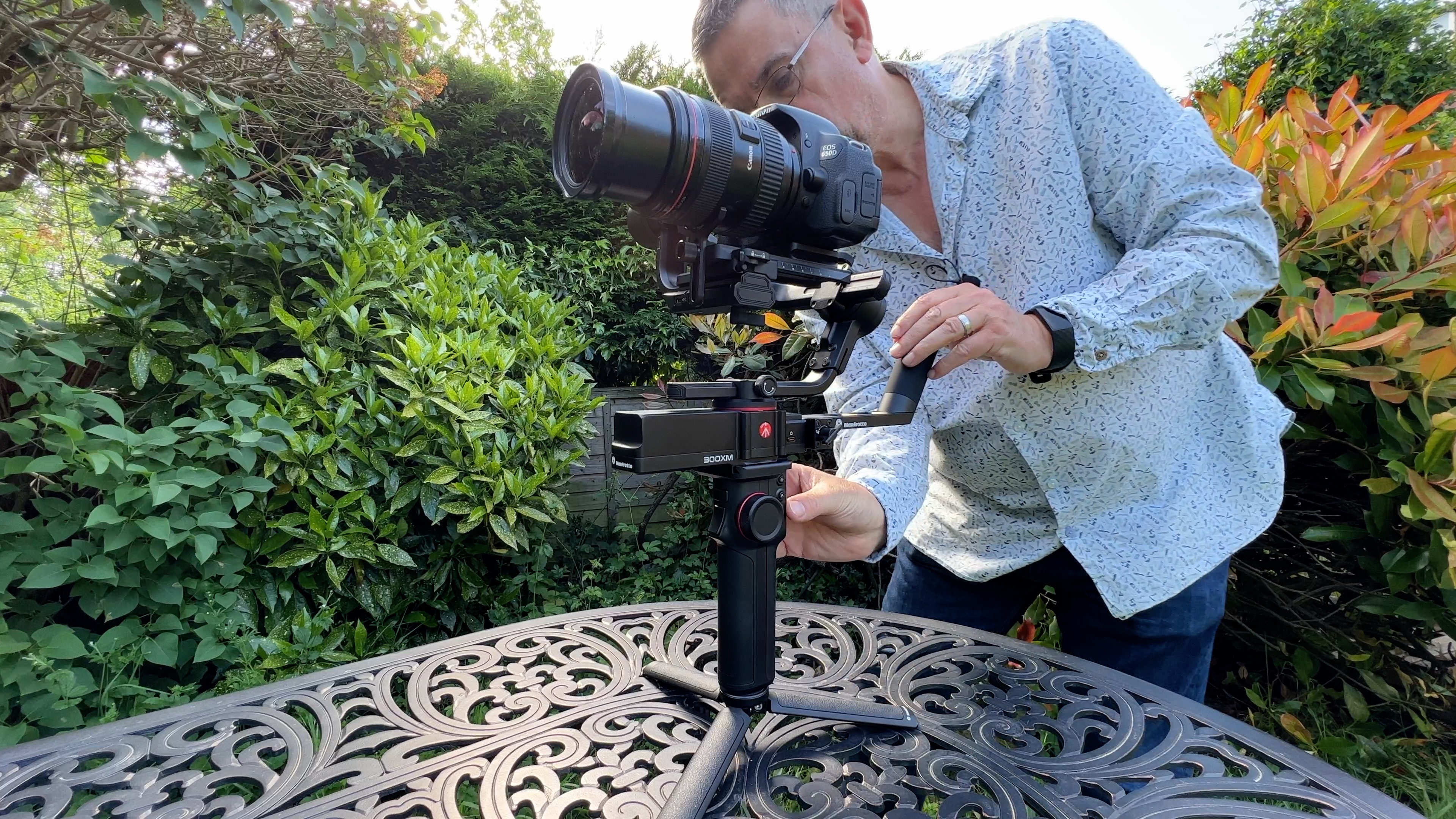
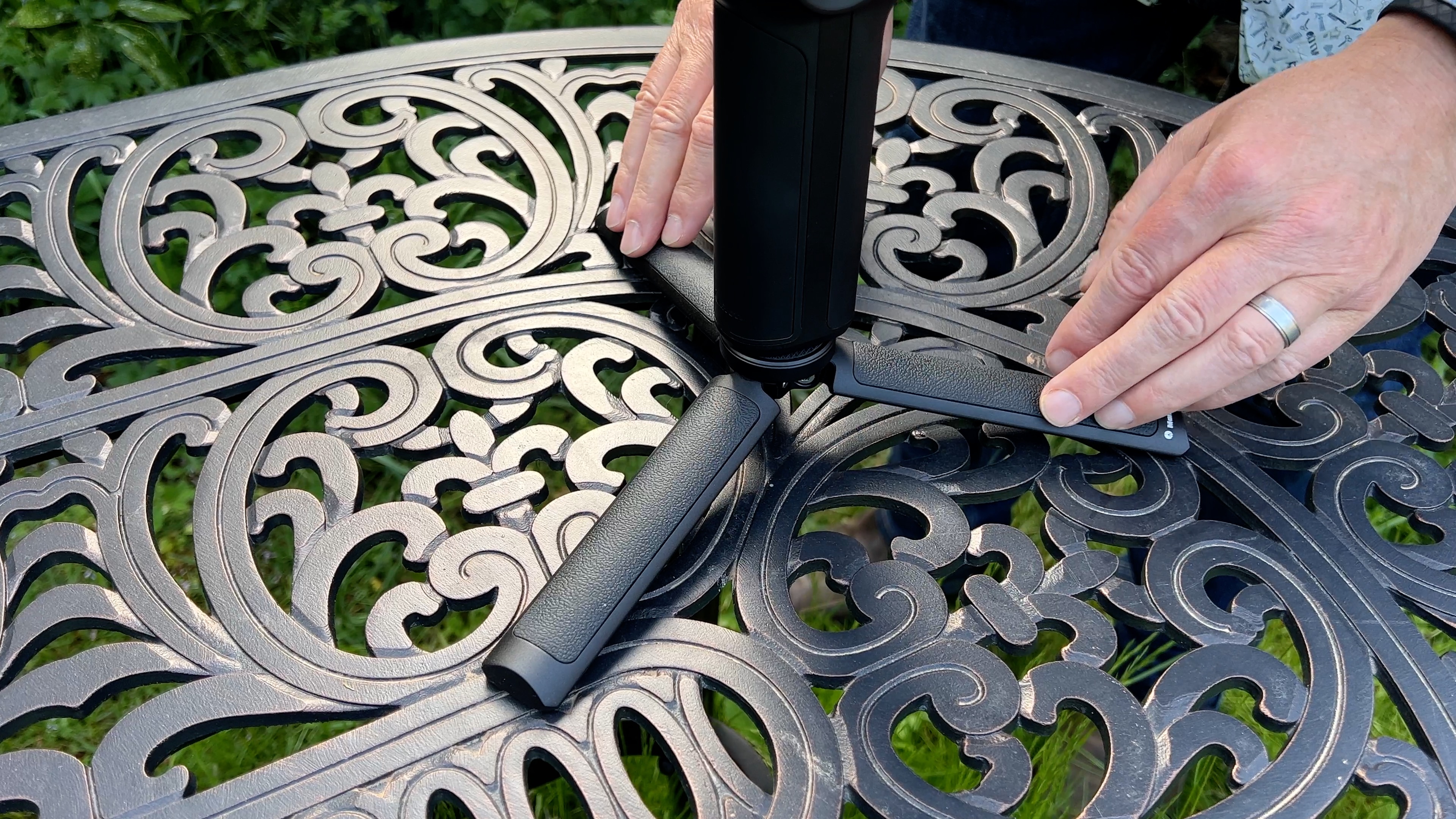
Lighter and cheaper gimbals can be operated with one hand, especially when supporting a smartphone. To help you handle the 300XM with a heavy DSLR attached there’s a rear supporting arm, so you can use two arms to help manoeuvre it.
There’s a host of accessories to help you mount a DSLR or mirrorless camera, including a handy lens support bracket. Initially, our chunky L-series zoom lens was too close to the quick release plate so we couldn’t rotate it to adjust zoom or focus, but after a quick rummage we found a supplied extension block in the carry case to raise the lens up a few millimetres.
The carry case also features a handy diagram that shows how the gimbal and should be folded and positioned when packed away. This is a welcome touch as the art of folding a gimbal back into its ‘closed’ position can be a challenging one to master.
The 300XM has a handy touch screen which enables you to adjust a host of properties, such as changing the mode from Pan to Pan Follow or Lock. The joystick lets you use your finger to pan and tilt electronically and an additional knob provides and alternative way to tilt (though you can programme this knob to perform other moves).
There’s also handy A and B buttons that let you programme and trigger the camera to pan and tilt to and from preset positions. A supplied cable enables you to connect the gimbal to your DSLR and control it – so you can tweak focus or trigger a recording. It couldn’t talk to my old 650D but it was an easy enough job to tap the camera’s record button manually during a shoot.
Unlike most cheaper gimbals, the 300XM is modular. You can detach the control handle, mount the gimbal on the supplied tripod legs and then use the separated handle to pan and tilt the gimbal remotely.
By pressing M on the handle you can switch to the amazing Gyro mode, which is a great way to show off. Now when you tilt or pan the detached control handle the gimbal mimics the movement of your hand (watch our test video to see this amazing feature in action).
Build and handling
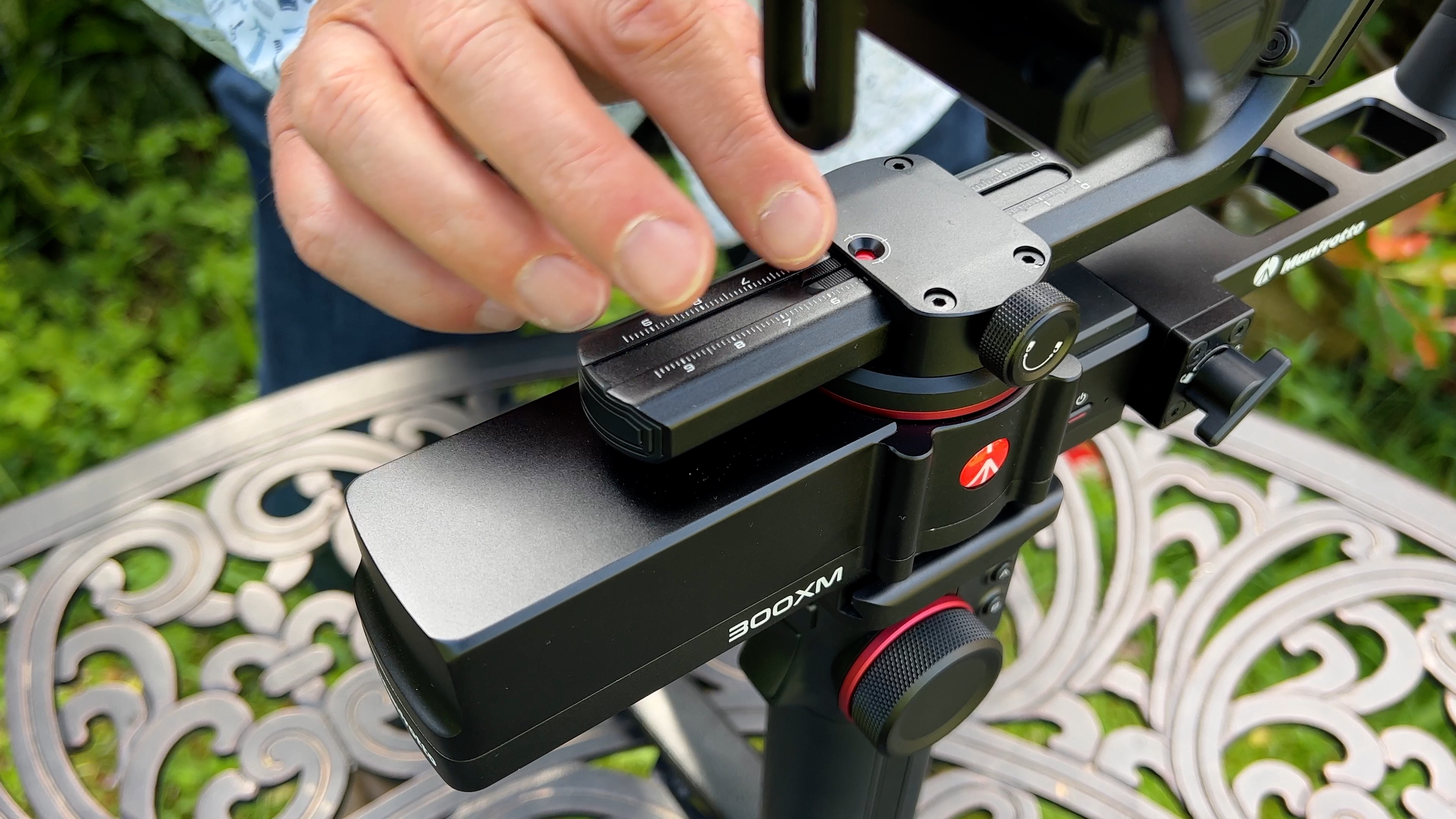
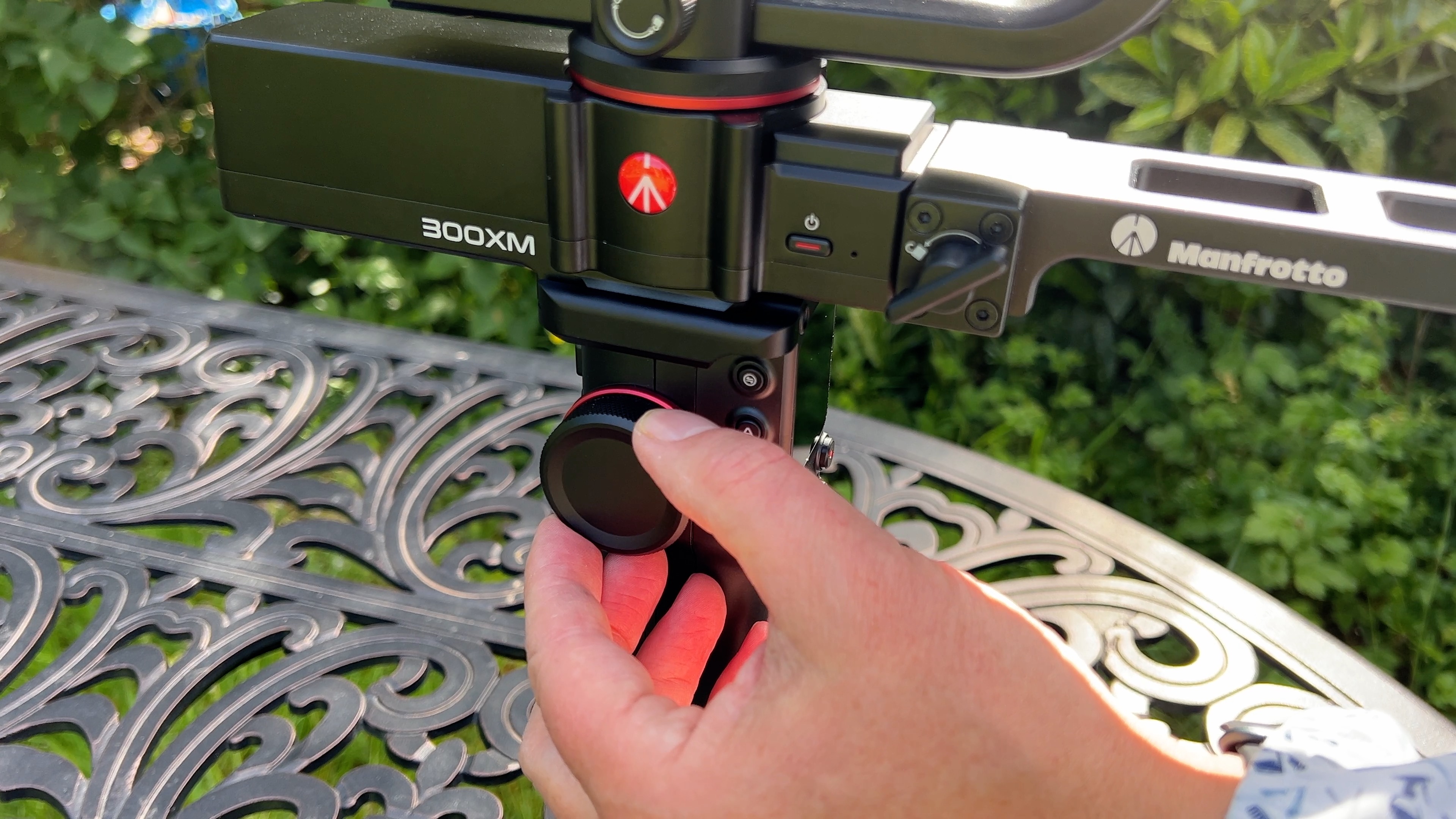
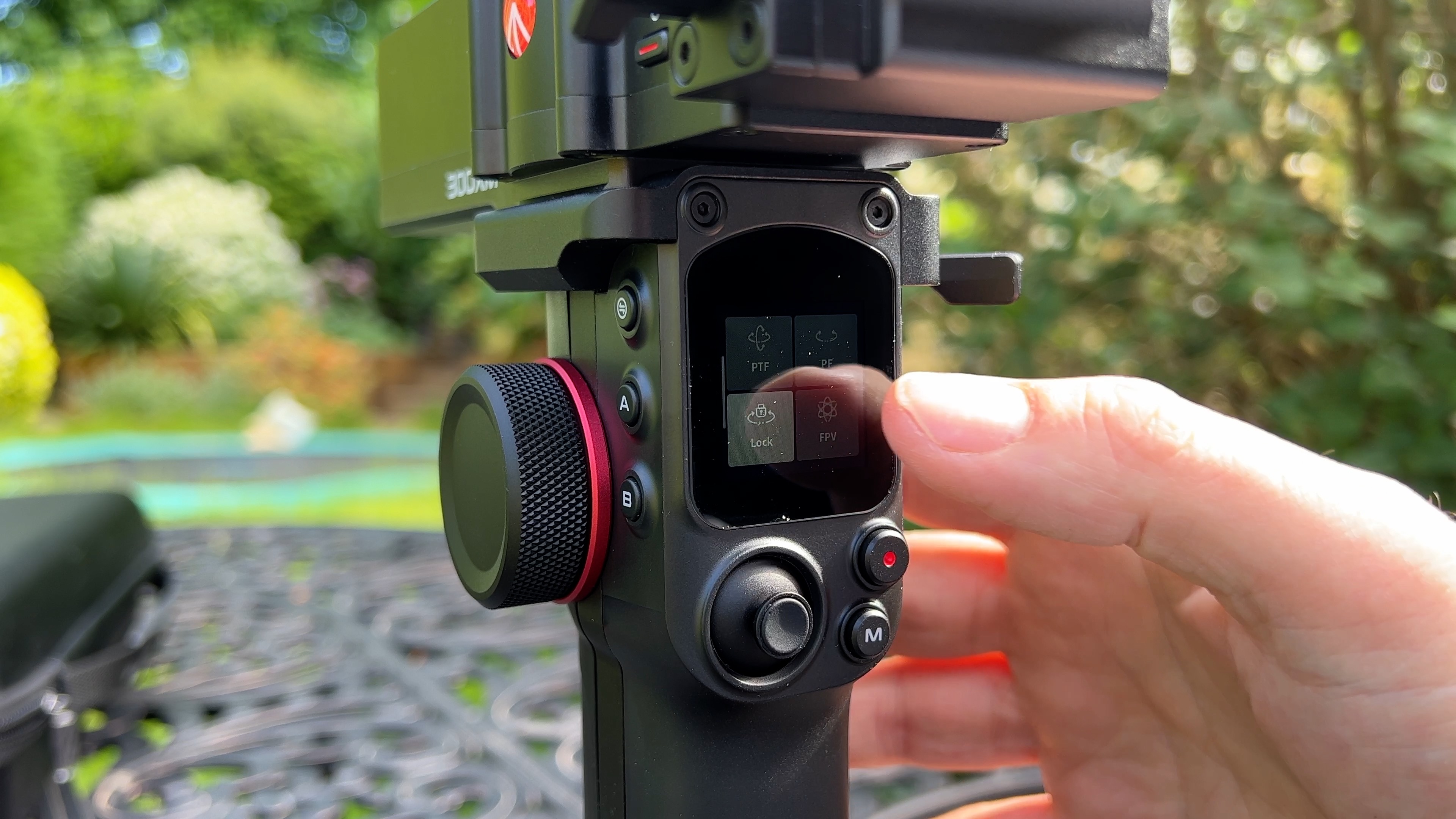
Budget gimbals such as the Vimble 3 let you pop your smartphone into their mount and are up and running almost instantly. As a professional gimbal required to carry a heavy payload the 300XM requires you to spend some time balancing your camera for optimum performance.
The quick start manual shows you how to balance the roll, tilt and pan axis one by one so that the gimbal won’t struggle to keep the camera level when you’re making your moves. Each of the 3 axis arms has an adjustable red marker which helps you quickly mark (and find) the perfect balance when your re-attach a particular camera.
It’s professional little touches like this which elevate the 300XM to something special. One key thing we learned during our test is to extend your camera’s lens barrel to its full length before you balance the camera. If you balance the camera with a shorter lens configuration and then adjust the zoom later this will change the balance of the camera on the gimbal which can cause vibration (or even make the gimbal go into Sleep mode).
Some gimbals have motors powerful enough to overcome moderate balance shifts, but it depends on the gimbal and the weight shift of the lens. This is a standard characteristic/failing of gimbals and one of the reasons many videographers prefer prime lenses over zooms.
If you use a prime lens then this will be easier to keep balanced as you won’t be able to change the length of the barrel. We strongly recommend looking at the more detailed step by step balancing instructions in the online manual as this will help you get up and running more quickly.
Performance

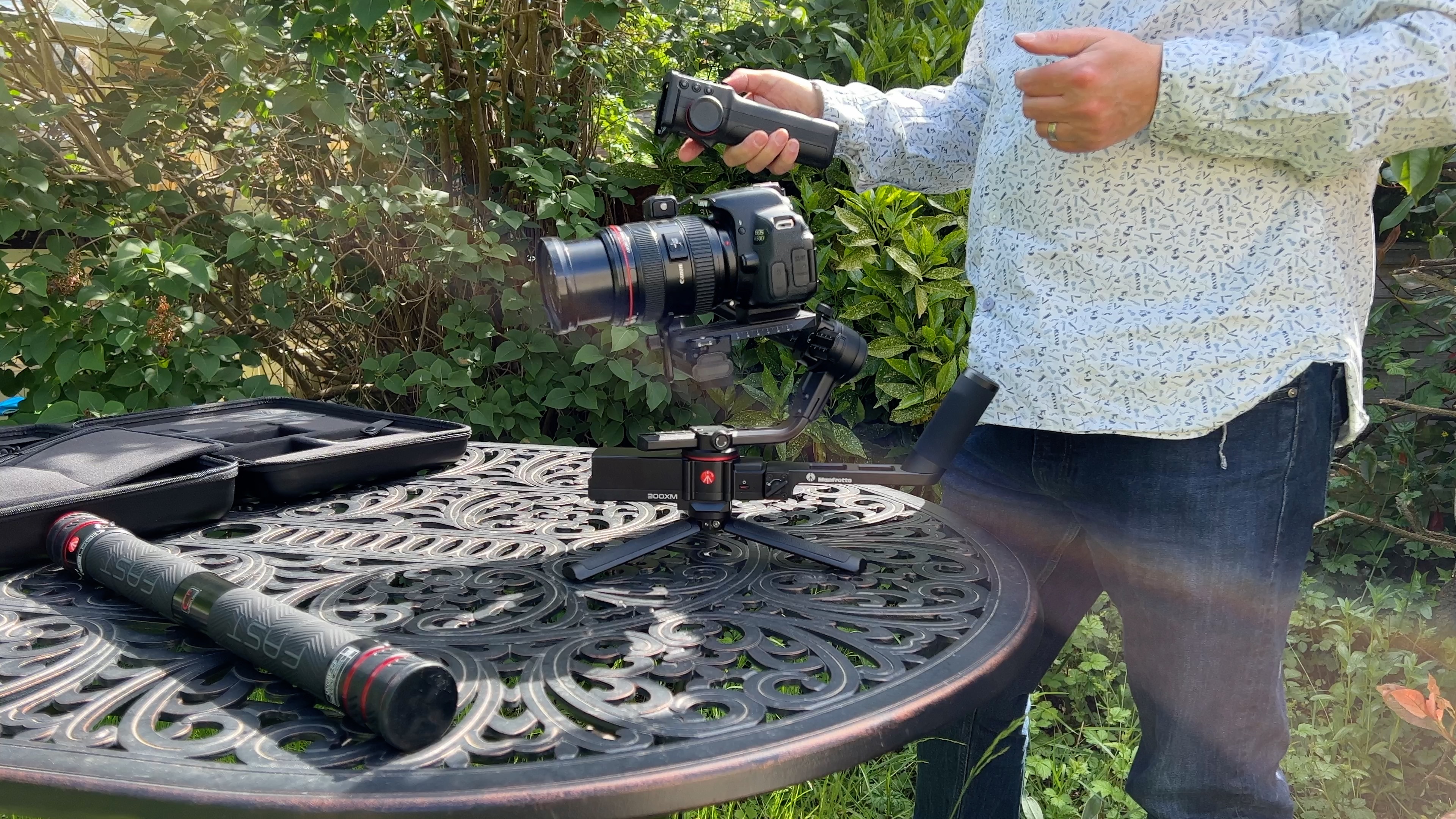
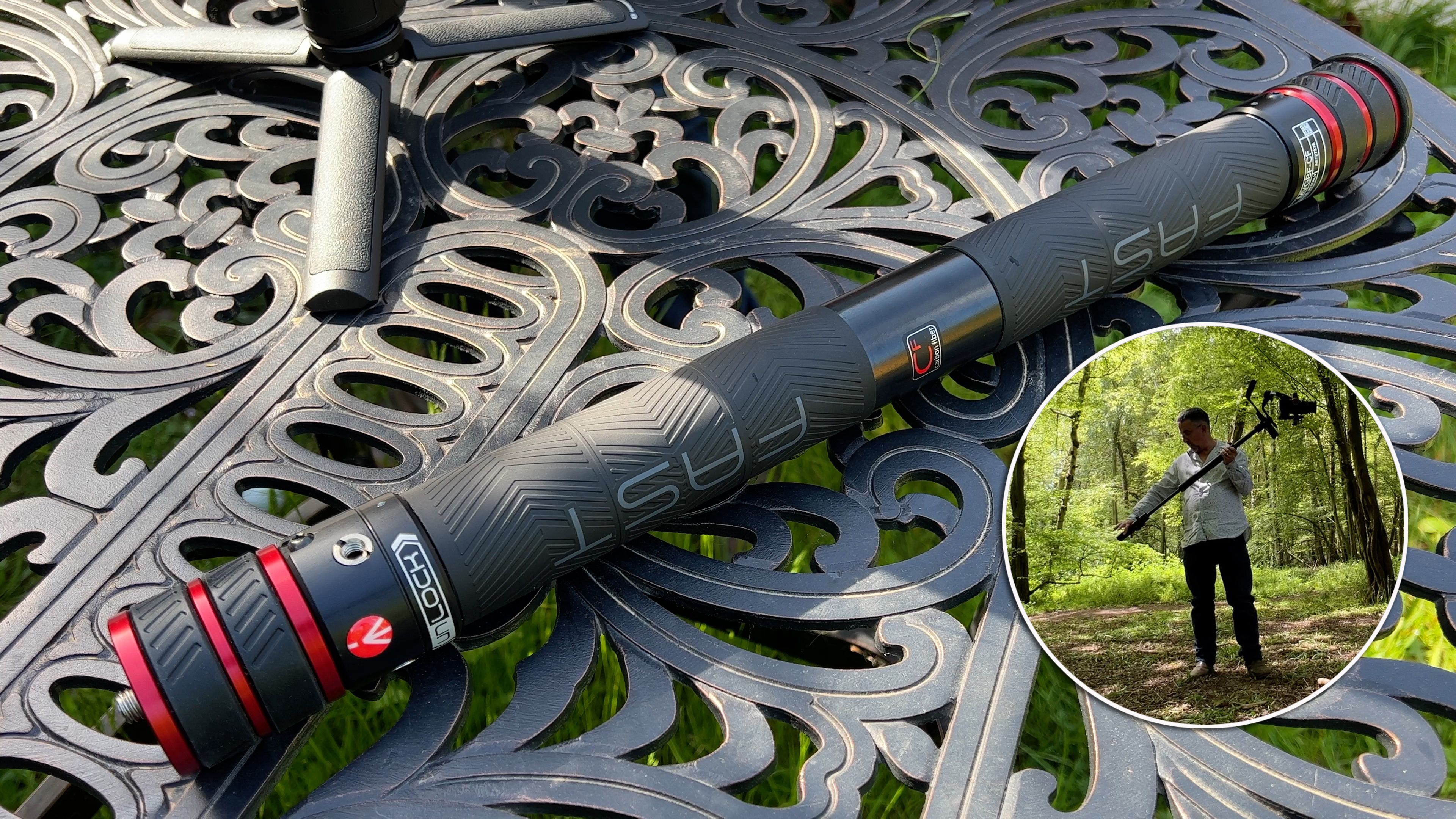
When you power up a correctly balanced gimbal there should be no operating noise at all. It pans, tilts and rolls your DSLR camera effortlessly (see our supplied test video). Indeed, when correctly balanced it’s so quiet that you can record sound via your DSLR's built in mic (or using a JOBY Wavo PRO) without picking up any gimbal vibrations or handling noises.
The only time the gimbal didn’t perform smoothly was when we forgot to unlock one of the 3 axes. In this situation it will beep at you and then go to sleep.
You can also mount the 300XM on Manfrotto’s Fast GimBoom (sold separately) and then attach the control handle to the bottom of the boom for access to the joystick. This enables you to crane the gimbal from low to high to create Hollywood style camera moves.
The GimBoom is made of a lightweight carbon fibre but when fully extended you’ll need to support the weight of the DSLR by holding the middle of the GimBoom, which can make it a challenge to access the control handle at the opposite end of the camera. We also found the 300XM could vibrate very slightly when making craning moves on a fully extended GimBoom, but these minor tremors were easy to smooth out in Final Cut Pro as you’ll see from the last shot in our test video.
Verdict
As its hefty price tag suggests, the 300XM is not for everyone. However it will enable professional videographers to perform smooth tilts and pans with a heavy camera/lens payload.
Its modular nature extends your shooting options, such a being able to control the tripod-mounted gimbal remotely or attach it to a GimBoom for low to high angle craning camera moves.
We were impressed with its silent running capability and the supporting app enables you to tweak various settings such as the speed of A to B preset camera moves. The Gimbal itself weighs 2kg, so with our 1.484kg Canon kit attached, we found our arm quickly began to ache when performing tilts, pans and tracks with that combined weight of 3.484kg. Still, you’ll soon tone up those biceps after a few shoots!
Read more:
• Best microphones for video
• Best on-camera monitors for video
• Best video lights
• Best audio recorders
George has been freelancing as a photo fixing and creative tutorial writer since 2002, working for award winning titles such as Digital Camera, PhotoPlus, N-Photo and Practical Photoshop. He's expert in communicating the ins and outs of Photoshop and Lightroom, as well as producing video production tutorials on Final Cut Pro and iMovie for magazines such as iCreate and Mac Format. He also produces regular and exclusive Photoshop CC tutorials for his YouTube channel.
